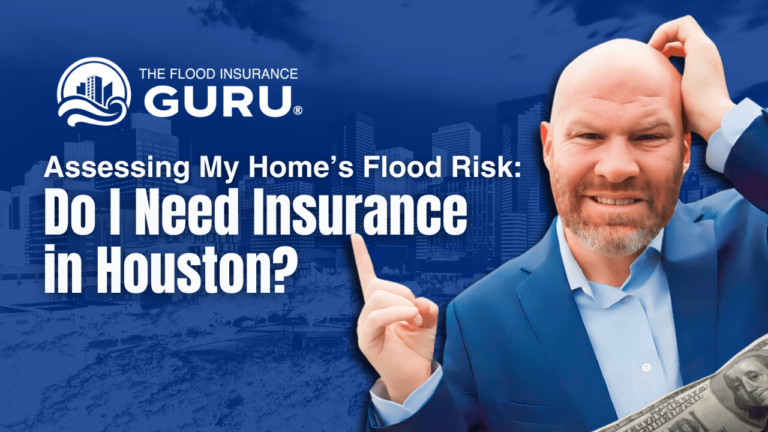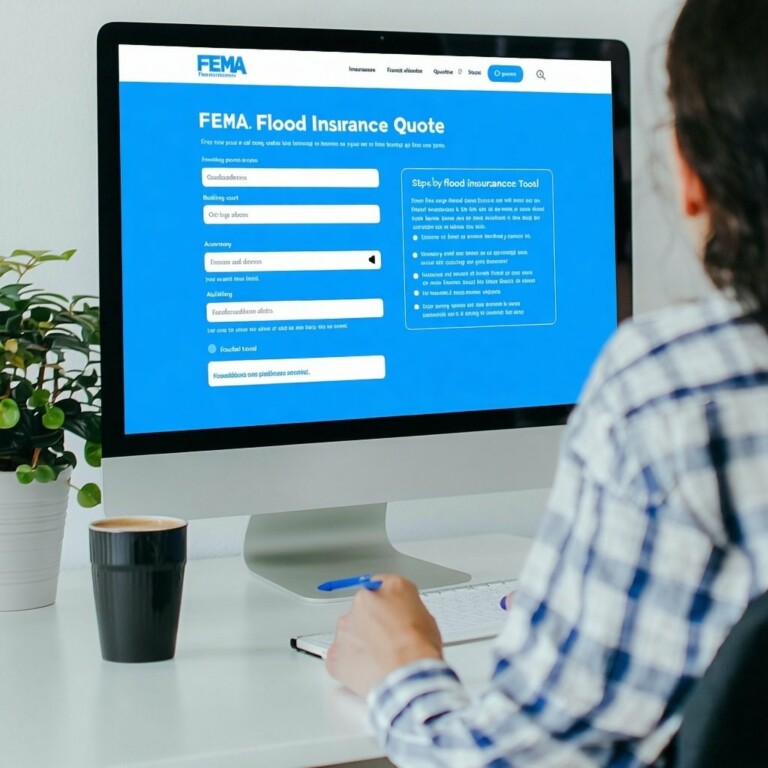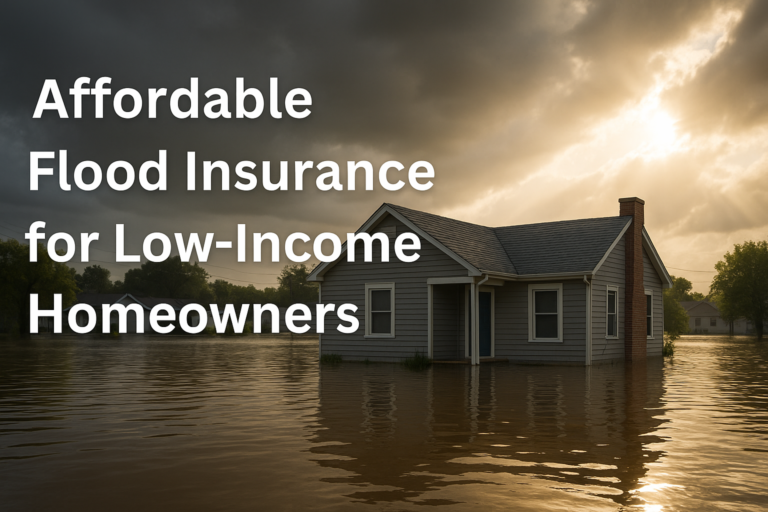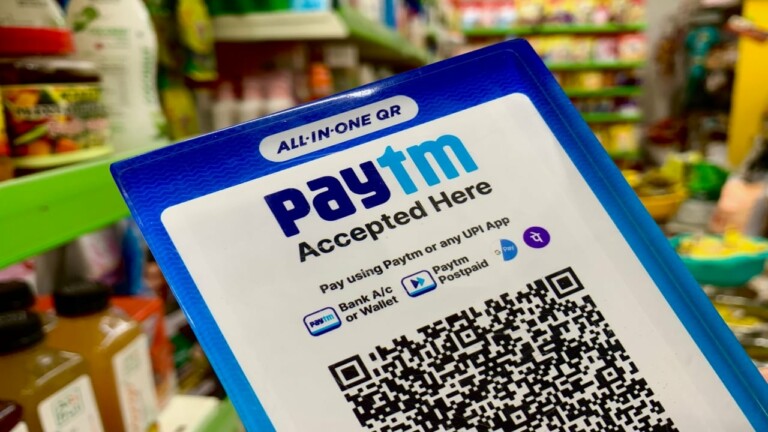Flood Insurance vs. Home Insurance
Flood Insurance vs. Home Insurance: What Most Homeowners Get Wrong
Do you know if your homeowners insurance covers flood damage?
What would happen if just one inch of water cost you $25,000 out of pocket?
In this article, you’ll learn the five key differences between flood and home insurance — and which one you actually need based on your real property risk.
Hi, I’m Chris Greene, founder of Flood Insurance Guru. I’ve spent the last decade helping more than 10,000 families navigate flood insurance and disaster recovery. I’ve seen homes saved and lives upended — and I want to make sure you understand exactly what you’re covered for before it’s too late.

1. What’s Actually Covered
One of the most common misconceptions I hear is this:
People assume their standard homeowners insurance will cover flood damage.
The reality? It doesn’t — not even a little.
Homeowners insurance typically covers water damage that originates inside the home — like a burst pipe or a leaking appliance.
But once water touches the ground before entering your home, it’s considered a flood, and your homeowners policy won’t apply.
Flood insurance covers rising water from natural disasters such as:
-
Heavy rain
-
Storm surges
-
Mudslides
-
Overflowing lakes and rivers
Misconception alert:
People also assume they need less flood insurance than home insurance. That’s just not true. Your flood and home insurance should be aligned in coverage amounts so you’re not left financially exposed when disaster hits.
Real story:
One investor I worked with had 9 feet of water in multiple properties. He didn’t think he needed flood insurance — and ended up taking on over $2 million in SBA disaster loans just to recover.
2. Where the Policies Come From
Here’s how the sources differ:
-
Homeowners insurance is sold by private companies like State Farm, Allstate, and Progressive.
-
Flood insurance comes from either:
-
The National Flood Insurance Program (NFIP) — managed by FEMA
-
Private insurance companies
-
NFIP policies are federally backed and standardized in pricing — meaning it doesn’t matter who sells it; the price is the same.
Private flood insurance often offers:
-
More flexible terms
-
Higher coverage limits
-
Extras like Additional Living Expenses (ALE)
Client win:
In 2018, my client Lisa’s lakefront home in Nebraska flooded. While her neighbors’ NFIP policies didn’t include housing coverage, her private policy covered six months of hotel stays. That financial and emotional relief was a game-changer.
3. How “Flood” is Defined
Understanding how insurance defines “flood” is critical.
The NFIP defines a flood as:
“A general and temporary condition of partial or complete inundation of two or more acres of normally dry land area or of two or more properties.”
Here’s what that means in real life:
-
If rainwater seeps in after accumulating on the ground, home insurance won’t cover it.
-
If a pipe bursts and floods your basement, home insurance does cover it.
Key takeaway:
If water touches the ground before entering your home, you need flood insurance.
4. What’s Protected — And For How Much
NFIP policies cap at:
-
$250,000 for the building
-
$100,000 for personal contents
This is often not enough to fully recover from major loss.
Private flood insurance typically offers:
-
Higher limits on both structure and contents
-
Optional replacement cost coverage on contents
-
Additional living expenses
-
Flexible deductibles
But no policy is perfect.
I’ve seen private carriers mishandle claims because third-party administrators dropped the ball.
That’s why it’s crucial to work with a flood expert who stays involved during claims — not just someone who sells the policy and disappears.
5. Cost and Risk Factors
As of 2025, average flood insurance costs range from $1,000 to $1,500 annually, based on:
-
Property elevation
-
Distance to water
-
Foundation type
-
Prior claims
-
Construction materials
-
Flood mitigation features
Private flood insurance is often 30–40% cheaper than NFIP and can offer better coverage — but cheaper isn’t always better.
The most important thing is whether it protects you when you need it most.
Over 25% of flood claims come from properties outside high-risk zones.
That’s why we built the Flood Risk Tool — to help you understand your real flood exposure.
Flood zones are just maps. Risk is personal.
How to Choose the Right Insurance Strategy
Here’s how to protect your home the smart way:
– Don’t rely on FEMA flood maps alone — use real data
– Compare NFIP and private flood insurance options
– Match coverage levels to the value of your home and belongings
– Understand policy exclusions and limitations
– Act early — most policies have a 30-day waiting period
– Work with a flood insurance expert, not just a general agent
Conclusion: Your Real Risk Is Bigger Than You Think
Now that you understand the five critical differences between flood and homeowners insurance, you’re better equipped to protect what matters most.
Remember:
-
Homeowners insurance doesn’t cover flood damage
-
Flood recovery is nearly impossible without insurance
I got into this business because I saw firsthand what floodwater can do.
I’ve watched loved ones be rescued from rising water.
I’ve personally been misclassified in a flood zone.
And I’ve helped thousands of families rebuild after disaster.
At Flood Insurance Guru, we don’t just sell policies —
we help you recover.
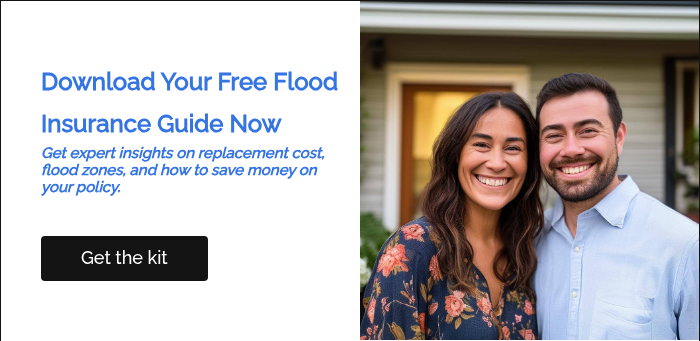
Cheaper for most Houston homeowners
✔ Coverage capped at $250,000 (structure) & $100,000 (contents)
✔ Cheaper for most Houston homeowners
✔ Coverage capped at $250,000 (structure) & $100,000 (contents)
Almost 30% of flood insurance claims come from low-risk areas, so do not assume your home is safe.
Our team has helped hundreds of Houston homeowners understand their flood risk and secure the right flood insurance coverage. If you need a personalized flood risk assessment, contact us today.
Not sure which policy is best for you? Get a personalized flood insurance quote today and ensure your home is fully protected.
📌
Now that you understand how flood insurance rates are determined, it’s time to take action:
Navigating the Waters of Flood Insurance in COBRA Zones
When it comes to protecting your home from the unpredictable forces of nature, understanding your flood insurance options is crucial. Many homeowners find themselves navigating the complex landscape of flood insurance, especially when their property lies within a COBRA zone. You’ve asked, and we’re here to answer all your pressing questions about flood insurance in these unique areas.
What Exactly is a COBRA Zone?
What makes COBRA zones different from other flood zones, and why does it matter for my flood insurance?
COBRA zones, or Coastal Barrier Resources System areas, are designated by the federal government to protect natural coastal barriers. Development in these zones is discouraged to conserve natural habitats, minimize loss of human life, and reduce federal expenditure on infrastructure and disaster relief. For homeowners, this means that obtaining federal flood insurance through the National Flood Insurance Program (NFIP) is not an option, making it essential to explore alternative insurance solutions.
Can I Get Flood Insurance in a COBRA Zone?
They Ask: If federal flood insurance isn’t available in COBRA zones, what are my options for protecting my property?
You Answer: While properties in COBRA zones are ineligible for federal flood insurance, private flood insurance becomes a vital alternative. Private insurers offer policies designed to meet the unique needs of homeowners in these areas, ensuring you can secure the protection you need against flooding. It’s crucial to work with an insurance agent who understands the intricacies of flood insurance policies in COBRA zones to find the best coverage for your home.
How Do I Know If My Property is in a COBRA Zone?
They Ask: How can I determine if my property is located within a COBRA zone and understand the implications for my flood insurance coverage?
You Answer: Identifying whether your property is in a COBRA zone is the first step in navigating your flood insurance options. You can use tools like the CBRS Mapper provided by the Fish and Wildlife Service or consult with a knowledgeable insurance agent. Understanding your property’s location helps clarify your insurance options and ensures you’re pursuing the right coverage for your situation.
What Should I Look for in a Flood Insurance Policy?
They Ask: What key factors should I consider when choosing a flood insurance policy for my property in a COBRA zone?
You Answer: When selecting a flood insurance policy in a COBRA zone, consider coverage limits, deductibles, and exclusions. It’s also important to assess the insurer’s reputation and the policy’s provisions for claims handling. An insurance agent specializing in flood insurance can help you compare policies and choose one that offers comprehensive protection tailored to your needs.
Conclusion
Understanding flood insurance in COBRA zones doesn’t have to be a daunting task. By asking the right questions and seeking expert advice, you can navigate the complexities of securing the right flood insurance for your property. Remember, protecting your home from flooding is about ensuring your peace of mind and financial security, regardless of where you live.
Navigating the Waters of Flood Insurance in COBRA Zones
When it comes to protecting your home from the unpredictable forces of nature, understanding your flood insurance options is crucial. Many homeowners find themselves navigating the complex landscape of flood insurance, especially when their property lies within a COBRA zone. You’ve asked, and we’re here to answer all your pressing questions about flood insurance in these unique areas.
What Exactly is a COBRA Zone?
What makes COBRA zones different from other flood zones, and why does it matter for my flood insurance?
COBRA zones, or Coastal Barrier Resources System areas, are designated by the federal government to protect natural coastal barriers. Development in these zones is discouraged to conserve natural habitats, minimize loss of human life, and reduce federal expenditure on infrastructure and disaster relief. For homeowners, this means that obtaining federal flood insurance through the National Flood Insurance Program (NFIP) is not an option, making it essential to explore alternative insurance solutions.
Can I Get Flood Insurance in a COBRA Zone?
They Ask: If federal flood insurance isn’t available in COBRA zones, what are my options for protecting my property?
You Answer: While properties in COBRA zones are ineligible for federal flood insurance, private flood insurance becomes a vital alternative. Private insurers offer policies designed to meet the unique needs of homeowners in these areas, ensuring you can secure the protection you need against flooding. It’s crucial to work with an insurance agent who understands the intricacies of flood insurance policies in COBRA zones to find the best coverage for your home.
How Do I Know If My Property is in a COBRA Zone?
They Ask: How can I determine if my property is located within a COBRA zone and understand the implications for my flood insurance coverage?
You Answer: Identifying whether your property is in a COBRA zone is the first step in navigating your flood insurance options. You can use tools like the CBRS Mapper provided by the Fish and Wildlife Service or consult with a knowledgeable insurance agent. Understanding your property’s location helps clarify your insurance options and ensures you’re pursuing the right coverage for your situation.
What Should I Look for in a Flood Insurance Policy?
They Ask: What key factors should I consider when choosing a flood insurance policy for my property in a COBRA zone?
You Answer: When selecting a flood insurance policy in a COBRA zone, consider coverage limits, deductibles, and exclusions. It’s also important to assess the insurer’s reputation and the policy’s provisions for claims handling. An insurance agent specializing in flood insurance can help you compare policies and choose one that offers comprehensive protection tailored to your needs.
Conclusion
Understanding flood insurance in COBRA zones doesn’t have to be a daunting task. By asking the right questions and seeking expert advice, you can navigate the complexities of securing the right flood insurance for your property. Remember, protecting your home from flooding is about ensuring your peace of mind and financial security, regardless of where you live.
Navigating the Waters of Flood Insurance in COBRA Zones
When it comes to protecting your home from the unpredictable forces of nature, understanding your flood insurance options is crucial. Many homeowners find themselves navigating the complex landscape of flood insurance, especially when their property lies within a COBRA zone. You’ve asked, and we’re here to answer all your pressing questions about flood insurance in these unique areas.
What Exactly is a COBRA Zone?
What makes COBRA zones different from other flood zones, and why does it matter for my flood insurance?
COBRA zones, or Coastal Barrier Resources System areas, are designated by the federal government to protect natural coastal barriers. Development in these zones is discouraged to conserve natural habitats, minimize loss of human life, and reduce federal expenditure on infrastructure and disaster relief. For homeowners, this means that obtaining federal flood insurance through the National Flood Insurance Program (NFIP) is not an option, making it essential to explore alternative insurance solutions.
Can I Get Flood Insurance in a COBRA Zone?
They Ask: If federal flood insurance isn’t available in COBRA zones, what are my options for protecting my property?
You Answer: While properties in COBRA zones are ineligible for federal flood insurance, private flood insurance becomes a vital alternative. Private insurers offer policies designed to meet the unique needs of homeowners in these areas, ensuring you can secure the protection you need against flooding. It’s crucial to work with an insurance agent who understands the intricacies of flood insurance policies in COBRA zones to find the best coverage for your home.
How Do I Know If My Property is in a COBRA Zone?
They Ask: How can I determine if my property is located within a COBRA zone and understand the implications for my flood insurance coverage?
You Answer: Identifying whether your property is in a COBRA zone is the first step in navigating your flood insurance options. You can use tools like the CBRS Mapper provided by the Fish and Wildlife Service or consult with a knowledgeable insurance agent. Understanding your property’s location helps clarify your insurance options and ensures you’re pursuing the right coverage for your situation.
What Should I Look for in a Flood Insurance Policy?
They Ask: What key factors should I consider when choosing a flood insurance policy for my property in a COBRA zone?
You Answer: When selecting a flood insurance policy in a COBRA zone, consider coverage limits, deductibles, and exclusions. It’s also important to assess the insurer’s reputation and the policy’s provisions for claims handling. An insurance agent specializing in flood insurance can help you compare policies and choose one that offers comprehensive protection tailored to your needs.
Conclusion
Understanding flood insurance in COBRA zones doesn’t have to be a daunting task. By asking the right questions and seeking expert advice, you can navigate the complexities of securing the right flood insurance for your property. Remember, protecting your home from flooding is about ensuring your peace of mind and financial security, regardless of where you live.
Navigating the Waters of Flood Insurance in COBRA Zones
When it comes to protecting your home from the unpredictable forces of nature, understanding your flood insurance options is crucial. Many homeowners find themselves navigating the complex landscape of flood insurance, especially when their property lies within a COBRA zone. You’ve asked, and we’re here to answer all your pressing questions about flood insurance in these unique areas.
What Exactly is a COBRA Zone?
What makes COBRA zones different from other flood zones, and why does it matter for my flood insurance?
COBRA zones, or Coastal Barrier Resources System areas, are designated by the federal government to protect natural coastal barriers. Development in these zones is discouraged to conserve natural habitats, minimize loss of human life, and reduce federal expenditure on infrastructure and disaster relief. For homeowners, this means that obtaining federal flood insurance through the National Flood Insurance Program (NFIP) is not an option, making it essential to explore alternative insurance solutions.
Can I Get Flood Insurance in a COBRA Zone?
They Ask: If federal flood insurance isn’t available in COBRA zones, what are my options for protecting my property?
You Answer: While properties in COBRA zones are ineligible for federal flood insurance, private flood insurance becomes a vital alternative. Private insurers offer policies designed to meet the unique needs of homeowners in these areas, ensuring you can secure the protection you need against flooding. It’s crucial to work with an insurance agent who understands the intricacies of flood insurance policies in COBRA zones to find the best coverage for your home.
How Do I Know If My Property is in a COBRA Zone?
They Ask: How can I determine if my property is located within a COBRA zone and understand the implications for my flood insurance coverage?
You Answer: Identifying whether your property is in a COBRA zone is the first step in navigating your flood insurance options. You can use tools like the CBRS Mapper provided by the Fish and Wildlife Service or consult with a knowledgeable insurance agent. Understanding your property’s location helps clarify your insurance options and ensures you’re pursuing the right coverage for your situation.
What Should I Look for in a Flood Insurance Policy?
They Ask: What key factors should I consider when choosing a flood insurance policy for my property in a COBRA zone?
You Answer: When selecting a flood insurance policy in a COBRA zone, consider coverage limits, deductibles, and exclusions. It’s also important to assess the insurer’s reputation and the policy’s provisions for claims handling. An insurance agent specializing in flood insurance can help you compare policies and choose one that offers comprehensive protection tailored to your needs.
Conclusion
Understanding flood insurance in COBRA zones doesn’t have to be a daunting task. By asking the right questions and seeking expert advice, you can navigate the complexities of securing the right flood insurance for your property. Remember, protecting your home from flooding is about ensuring your peace of mind and financial security, regardless of where you live.
Information contained on this page is provided by an independent third-party content provider. This website make no warranties or representations in connection therewith. If you are affiliated with this page and would like it removed please contact editor @producerpress.com


